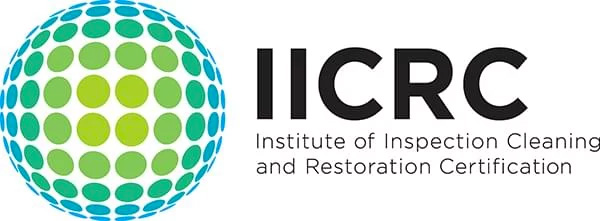The Importance of Indoor Air Quality in FL
Because of the health impact, indoor air quality is important to everyone: staff, tenants, building managers and landlords. Sadly, the issue has long been overlooked in comparison to outdoor air pollution.
So, what exactly does indoor air quality mean? It basically refers to how clean air is inside a building. According to the Environmental Protection Agency, indoor air quality can be up to 5x more polluted than outdoor air quality.
Knowing and controlling common pollutants indoors can significantly help minimize the risk of health issues.
Health issues emanating from poor indoor air quality can be experienced soon after exposure. Sometimes, however, the health effects can manifest years later.
What Are Some Short-Term Effects of Indoor Air Pollutants?
Indoor air pollutants affect people differently depending on a myriad of factors such as age and individual sensitivity.
When a person is exposed to an indoor pollutant, the health effects can show up almost immediately. Examples of such health issues include fatigue, dizziness, headaches, and throat, nose and eye irritation.
People with pre-existing health conditions, like asthma, may also notice aggravated or worsened symptoms.

These health effects are usually treatable. At times, the only remedy a person may need is to get away from the exposure. But, that’s only possible if the pollution can be identified in the first place.
What Are the Long-Term Effects of Indoor Air Pollution?
Some health issues may occur long after exposure has happened. Generally speaking, these health issues tend to be severely debilitating or even fatal. Examples of such health effects include cancer, heart disease and some respiratory diseases.
That’s why it’s advisable to improve the indoor air quality even when there are no apparent symptoms. Considerable uncertainty still exists in regards to the amount of pollutant concentrations or time required for specific health issues to be produced.
Experts are still carrying our further research in this regard, so it’s best to act with excess caution.
What Are Some Pollutants That Cause Indoor Air Pollution?
The primary causes of indoor air pollution are those from sources that produce particles or gases into the atmosphere. Poor ventilation can exacerbate pollution levels by failing to dilute the gases or particles released.
High humidity levels and temperature can lead to increased concentrations of some pollutants.
The following are some sources of indoor air pollution:
- Excess moisture
- Central heating and cooling systems
- Humidification devices
- Home cleaning and maintenance products
- Building materials and furnishings
- Tobacco products
- Fuel-burning combustion appliances

How much a pollutant source emits and how dangerous those emissions are is relative. Sometimes, how old the source is and how well it’s maintained can play a significant role.
An adjusted gas stove, for example, can emit more carbon monoxide than one that has no adjustments.
In some cases, sources can release pollutants more or less continuously. Examples of such pollutants include air fresheners and building materials. Other sources, like those related to cleaning and smoking, can yield pollutants continuously.
What Impact Does Asbestos Have On Indoor Air Quality?
Asbestos is a group of heat-resistant minerals. Because of the strong fibers it has and its ability to resist heat, asbestos has long been used in the construction industry. It’s available in building materials such as paper products, ceiling and floor tiles, and roofing shingles.
Besides building materials, asbestos is also found in coatings, packaging, heat-resistant fabrics and friction products.
Concentrations of airborne asbestos can elevate after materials containing asbestos are cut or sanded. The asbestos fibers released into the air can cause a myriad of health issues, including:
- Scarring of the lung lining
- Lung, kidney, and throat cancer
- Mesothelioma (a rare cancer of the stomach and chest lining)
- Asbestosis (causes permanent lung damage)
What Impact Do Biological Pollutants Have On Indoor Air Quality?
Biological contaminants are–or are produced by–living things. It goes without saying that these pollutants have many sources. Some of the sources include:

- Viruses and bacteria
- Droppings and body parts from insects, rodents, cockroaches and other pests
- Household pets, which are sources of animal dander and saliva
- Bacteria, which are carried by plant debris, soil, animals and people
- Mold
- Viruses, which are transmitted by animals and people
- Pollens, which originate from plants
- Contaminated central air handling systems
One way of controlling these biological pollutants is by controlling the relative humidity level in a home. Experts recommend homes have a relative humidity of anywhere between 30 and 50 percent.
Wet surfaces, water-damaged materials and standing water also serve as breeding grounds for insects, bacteria, mildew and mold.
Some of the health effects that can arise from biological pollutants include:
- Digestive problems
- Fever
- Lethargy
- Dizziness
- Shortness of breath
- Coughing
- Watery eyes
- Sneezing
- Allergic rhinitis
- Hypersensitivity pneumonitis
What Impact Does Inadequate Ventilation Have On Indoor Air Quality?
If outdoor air entering indoors is too little, pollutants can accumulate to toxic levels. These can then cause health and comfort problems. Unless a building has special mechanical ventilation systems, those with poorly ventilated systems will have higher levels of indoor pollutants.
How Can Indoor Air Quality Be Improved?
The following are a couple of things you can do to improve the indoor air quality of your home:
.jpg)
- Keep it clean. Clear clutter and regularly vacuum carpets and area rugs, and clean beddings, drapes and other items that tend to attract allergens
- Invest in an air purification system. These systems are designed to help capture irritants that cause health issues. While it can’t remove all allergens completely, it can help minimize the problems
- Change your filters. Have a forced-air heating system? If so, regularly change filters to ensure optimal performance
- Ensure your home is properly ventilated. Even during the cold months, form the habit of opening windows from time to time to allow fresh air into your home. You may also want to use fans to remove potential air contaminants, more so in areas like the kitchen where there are cooking fumes
Bottom Line
There you have it. Everything you need to know about indoor air quality (IAQ). Do you suspect your indoor air quality has been compromised? If so, Markham Services can help. We can test it for pollutants and contaminants and suggest solutions to improve it.


